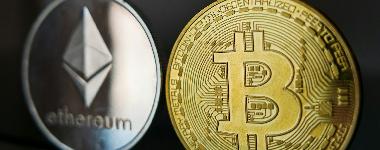The early days of Bitcoin were profoundly shaped by the Silk Road, an online marketplace infamous for facilitating the trade of illicit goods. This platform introduced a critical mass of users to Bitcoin, demonstrating its utility in a realm where anonymity and decentralization were paramount. Historically, new technologies often find their initial footing in vices like drugs, gambling, and pornography. These sectors, despite their moral ambiguity, have a proven track record of driving technological adoption.
Consider the video cassette recorder (VCR), which saw widespread adoption largely due to the demand for adult content. Early home computer usage similarly spiked with the availability of adult entertainment. During the early 1980s in France, Minitel—a precursor to the modern internet—also found a significant portion of its user base in the sex trade. Despite Minitel's potential, France's conservative capital markets stymied its growth, a stark contrast to the explosive tech booms seen in places with more dynamic financial ecosystems, like the United States.
The trend continues in the digital age with platforms like Pornhub consuming vast amounts of internet bandwidth. Today, the rise of artificial intelligence (AI) and deepfake technology is again pushing the envelope, requiring substantial energy to process and deliver increasingly sophisticated content. This demand for energy parallels the high energy requirements of Bitcoin mining, where the hashrate—an indicator of the computational power being used—remains extremely high.
The primary drivers of this high energy consumption can be traced back to fundamental human vices: gambling, drugs, and pornography. These industries are immensely profitable and deeply embedded in global stock markets, influencing technological advancements and energy consumption patterns.
In this landscape, Bitcoin emerges as a counterpoint to the potentially dystopian implications of AI. Bitcoin's high hashrate is not merely a technical metric but a reflection of its ongoing struggle for dominance in the global energy market against AI-driven applications. This competition underscores a broader battle for the control and ethical use of technology.
Bitcoin, in its essence, serves as a mirror reflecting human nature. It reveals our best and worst traits, much like the mirror in the tale of Snow White. This fairy tale analogy highlights how Bitcoin can expose the true character of individuals and institutions. For those aligned with the ethical and decentralizing principles of Bitcoin, it serves as a source of empowerment and self-discovery. For those with less noble intentions, it reveals and amplifies their flaws.
This duality of Bitcoin was evident during a visit to a museum in Mexico City, where an art installation featured figurines descending steps, transforming into various forms as they progressed. This transformation symbolized the journey of self-awareness and the stripping away of societal masks, much like how Bitcoin can strip away financial facades to reveal deeper truths about our economic system and personal integrity.
The poem by William Blake, "To see a World in a Grain of Sand," captures this essence of profound insight and interconnectedness, which Bitcoin mirrors. Conversely, T.S. Eliot’s somber line, "I will show you fear in a handful of dust," serves as a cautionary reminder of the potential perils in our pursuit of truth and self-awareness.
Bitcoin accelerates this journey of self-discovery, pushing individuals and society toward a collective epiphany. For some, like Michael Saylor, Bitcoin represents the culmination of a lifelong quest for a transformative technology. For others, such as Sam Bankman-Fried, it may expose and accelerate a path of moral and ethical decline.
The ongoing global movement against financial centralization, epitomized by the Global Insurrection Against Banker Occupation (GIABO), finds resonance with Bitcoin’s principles. Figures like Javier Milei in Argentina, who advocates for Bitcoin and the Austrian school of economics, embody this resistance. His efforts symbolize a political and economic pushback against traditional central banking systems.
As we stand on the brink of what could be a new Renaissance, driven by the principles of decentralization and self-sovereignty inherent in Bitcoin, it becomes crucial to look into the metaphorical mirror Bitcoin holds up to us. In doing so, we not only see our present selves but also glimpse the potential for a future shaped by transparency, ethical alignment, and technological empowerment.










